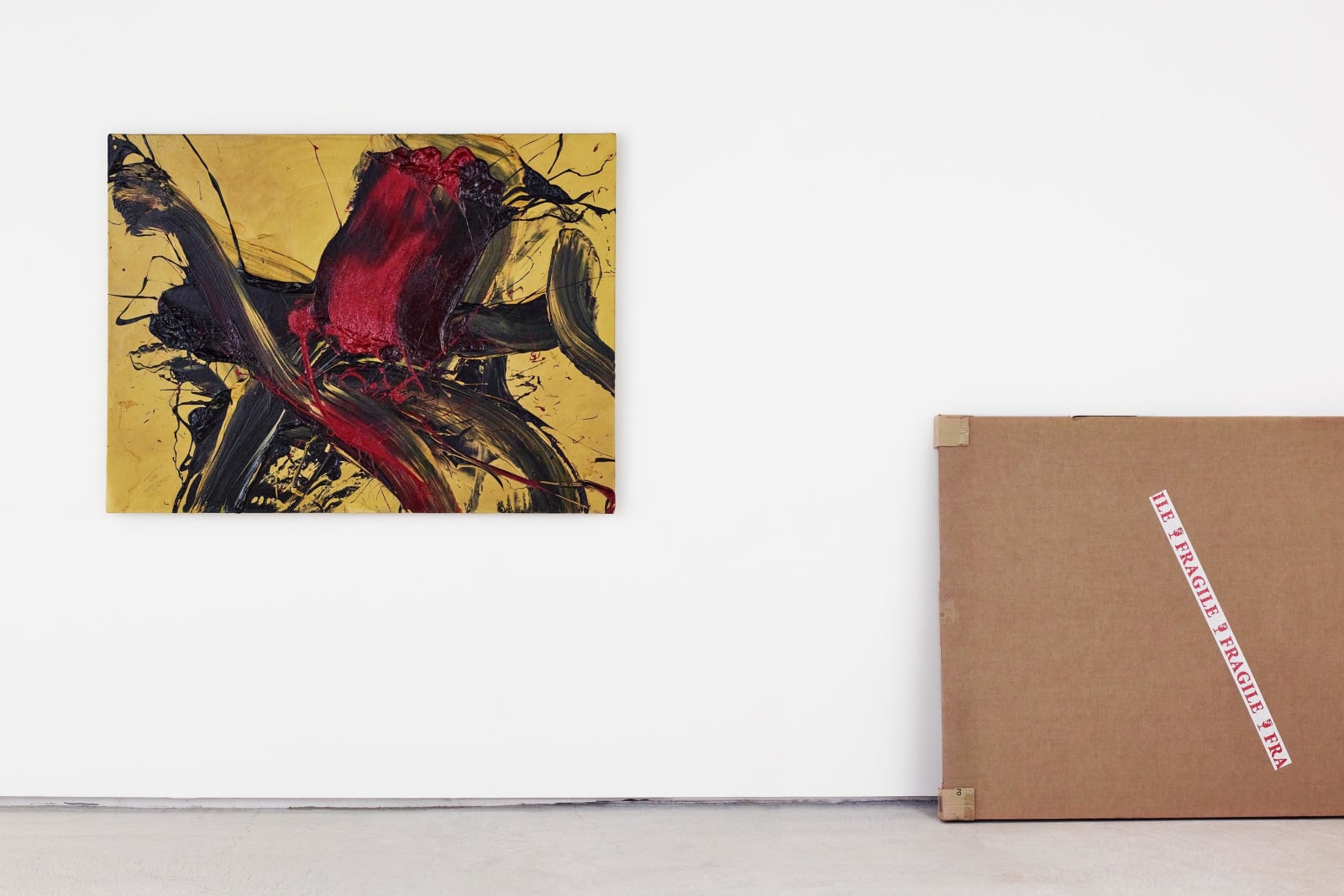Shiraga Kazuo (1924–2008)
Dance
Oil on canvas
Signed by the artist on the reverse
1976
With a certificate of registration by Japan Art Dealers Association
97 x 130.2 cm
Signed by the artist on the reverse
1976
With a certificate of registration by Japan Art Dealers Association
97 x 130.2 cm
Further images
Shiraga Kazuo met the art critic Michel Tapié during his visit to Japan in 1957 and promised to send twelve of his works to Europe within a year. Previously, Shiraga did not give specific titles to his works and merely named them Untitled or Work. However, after that, he began creating works named after fictional characters in the Chinese classic The Water Margin such as The Wild, Hairy Star and The Sword Star, Tai Sui who Stands His Ground (respectively, the nicknames of the heros Kong Ming and Ruan the Second). The dramatic world of Shiraga Kazuo was created by an abstraction of colors that cut through the surface of his paintings with spectacular images. In 1971, the artist underwent Buddhist ordination at the historic temple Enryaku-ji on Mount Hiei in Kyoto and assumed the priest’s name Sodo. From there, he gave his works titles related to esoteric Buddhism such as Potalaka, the Pure Land of Avalokiteshvara (Artizon Museum). After successively painting Ashura (Museum and Archives, Kyoto Institute of Technology) and The Ten Realms, Shiraga created new circular works, and in 1976, he made the present work Dance.
Compared to the mixtures of colors in his previous works, in which the stroke order was difficult to discern, the stroke order in this foot painting can easily be seen. In this work, he painted a yellow surface, upon which he squeezed out and smeared black paint from left to right with his foot, which he lifted up and lowered again to punctuate the black horizontal line. He then created a black space starting in the center and extended it to the upper part of the canvas, then moved downward to the lower left to make another line down. From the upper left, he swept his foot down through the middle towards the lower part. Then he dropped a black line onto the canvas with a brush. For the dark red color in the center of the painting, Shiraga drew his foot upward, and then in reverse, downward. Finally, he added a red line at the top of the screen with a brush.
The contrast between the thick black line at the center of the painting, which shows a raised black mass that he dropped onto the canvas at the beginning, and the undulation of the foot work that extends momentarily upward, then descends again, is intriguing. Shiraga did not completely paint the canvas, rather he made the colors distinct, creating a bold effect that stands out all the more. In the lower right corner, the artist signed his last name with what appears to be a pencil. On the back, he inscribed “Dance, 1976, Shiraga Kazuo” with the characters in Japanese for “November” to indicate not only the year but the month in which he made this painting.
Shiraga Kazuo (painter; 1924–2008)
Painter from Hyogo Prefecture. Shiraga graduated from the nihonga department of the Kyoto City University of Arts, but later changed to Western painting, continuing his studies with Yoshihara Jiro. In 1955, Shiraga joined the Gutai Art Association. Garnering renown for his style of action painting of kneading pigments with his fingers and painting with his feet, he joined the Art Informel movement upon the recommendation of Michel Tapié. In 1965, his work Red was awarded at the Eighth Japan International Art Exhibition. He also exhibited frequently in France, Italy and Germany.
Compared to the mixtures of colors in his previous works, in which the stroke order was difficult to discern, the stroke order in this foot painting can easily be seen. In this work, he painted a yellow surface, upon which he squeezed out and smeared black paint from left to right with his foot, which he lifted up and lowered again to punctuate the black horizontal line. He then created a black space starting in the center and extended it to the upper part of the canvas, then moved downward to the lower left to make another line down. From the upper left, he swept his foot down through the middle towards the lower part. Then he dropped a black line onto the canvas with a brush. For the dark red color in the center of the painting, Shiraga drew his foot upward, and then in reverse, downward. Finally, he added a red line at the top of the screen with a brush.
The contrast between the thick black line at the center of the painting, which shows a raised black mass that he dropped onto the canvas at the beginning, and the undulation of the foot work that extends momentarily upward, then descends again, is intriguing. Shiraga did not completely paint the canvas, rather he made the colors distinct, creating a bold effect that stands out all the more. In the lower right corner, the artist signed his last name with what appears to be a pencil. On the back, he inscribed “Dance, 1976, Shiraga Kazuo” with the characters in Japanese for “November” to indicate not only the year but the month in which he made this painting.
Shiraga Kazuo (painter; 1924–2008)
Painter from Hyogo Prefecture. Shiraga graduated from the nihonga department of the Kyoto City University of Arts, but later changed to Western painting, continuing his studies with Yoshihara Jiro. In 1955, Shiraga joined the Gutai Art Association. Garnering renown for his style of action painting of kneading pigments with his fingers and painting with his feet, he joined the Art Informel movement upon the recommendation of Michel Tapié. In 1965, his work Red was awarded at the Eighth Japan International Art Exhibition. He also exhibited frequently in France, Italy and Germany.









